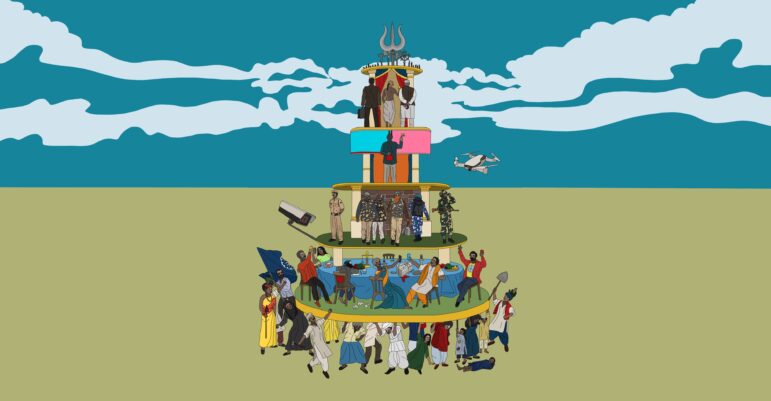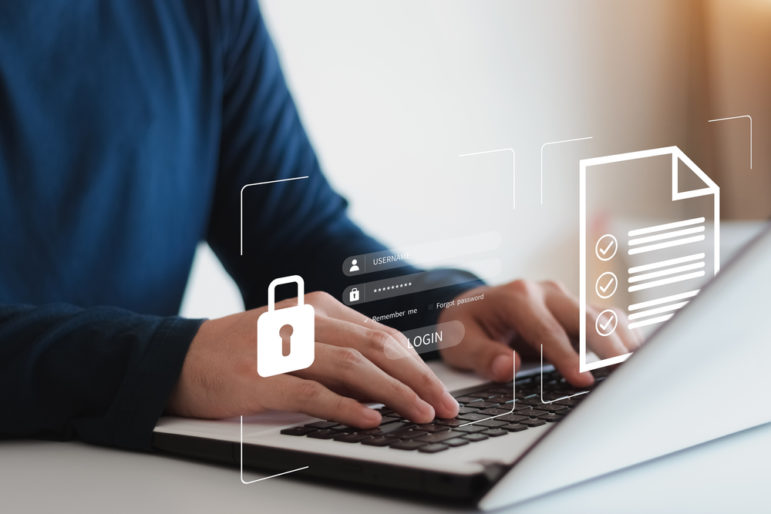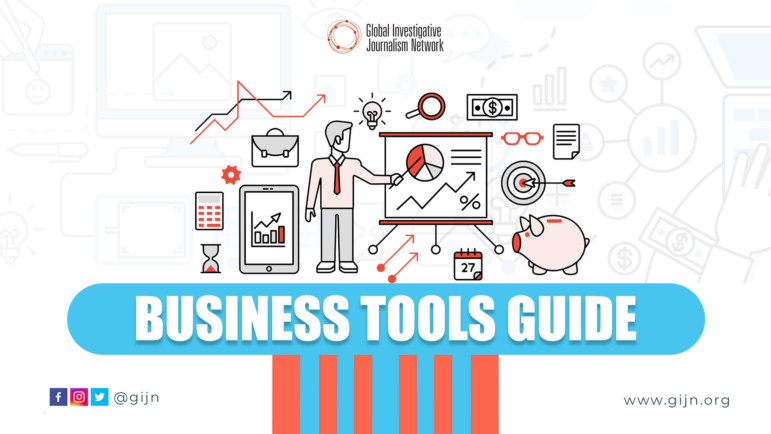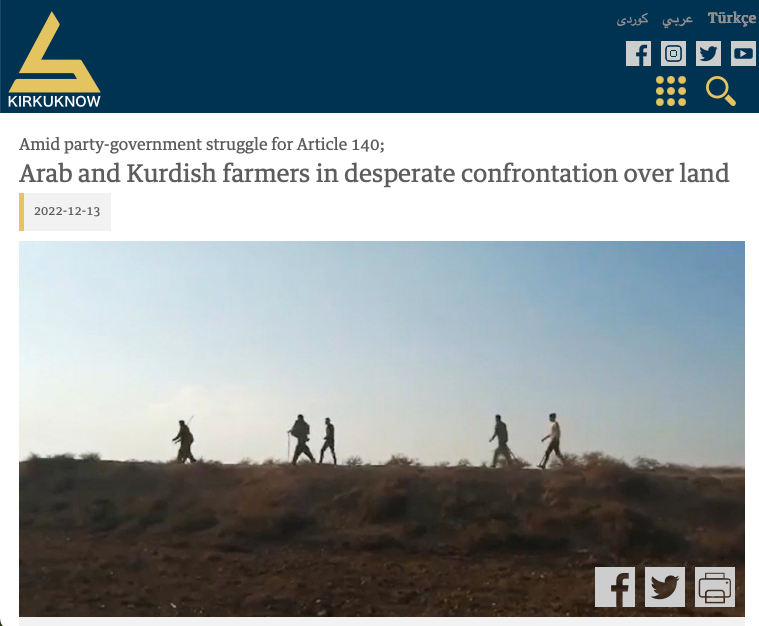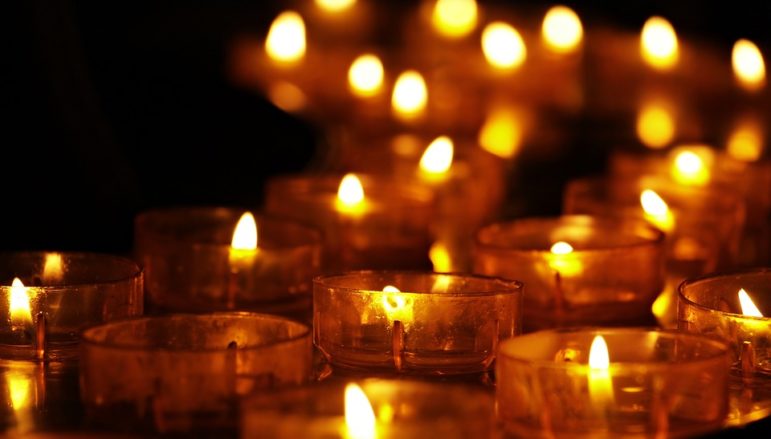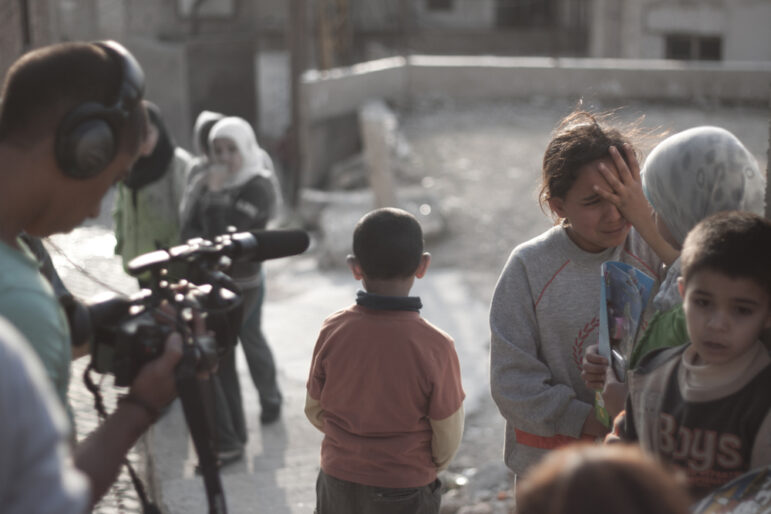

Reporting on ethno-religious conflict requires careful consideration about consent, trauma, language, and source protection. Image: Shutterstock
Tips for Investigating and Reporting on Ethno-Religious Conflicts Responsibly and Ethically
Read this article in
For reporters working on the frontlines of ethno-religious conflicts — involving groups where religion is an integral part of social or cultural life — the challenge is not only to uncover and document the facts on the ground, but to do so responsibly. However, in navigating online misinformation and deadline pressure from social media news cycles, watchdog journalists can also fall into framing and language traps that can inflame tensions, rather than inform the reader.
Examples from coverage of conflicts in India, Nigeria, Iraq, and the Rohingya crisis in Bangladesh reveal a set of best practices and newsroom policies that journalists and editors can apply to reporting on tension and conflicts anywhere in the world. While some policies are part of longstanding journalism practice or common sense, newsrooms operating in areas where there are long-standing conflicts between ethno-religious groups also have to be even more mindful of the issues and tensions in their beat or region.
‘Complete Avoidance of Labels’
When covering ethno-religious groups or conflicts, reporters should consider their choice of words carefully. Sectarian, partisan, loaded, and therefore potentially inflammatory language can start — and be particularly problematic — in the headline. This 2021 story about travelers being attacked and killed by a militia in north-central Nigeria, for example, could escalate tensions by underscoring the ethnic group and religions of those involved.
Johnstone Kpilaakaa, sub-editor and head of standards and ethics at HumAngle Media, recalled feeling uneasy when he was assigned to cover a clash in Nigeria, aware that a single word could either calm or inflame the public. (Editor’s Note: The author has written for and was a former fellow at HumAngle Media.)
The language of journalism can shape public perception more than facts. Labels such as “Fulani herders” (referring to an ethnic group dispersed across the Sahara, Sahel, and West Africa, that are predominantly Muslim) or “Christian indigenes” can harden into stereotypes and cast a community as villains.
“The moment you fix a conflict on ethnicity or religion, you’re creating stereotypes, and stereotypes are dangerous. They fuel distrust, and sometimes, cost lives,” he notes.
In June 2025, Kpilaakaa published an analysis titled Plateau Mob Action: When Identity Becomes a Death Sentence in Nigeria, explaining how HumAngle’s reporting had documented a rise in mob violence in “states with entrenched ethno-religious fault lines” that was being driven by “ethnic and religious profiling,” with “deadly consequences” for travelers in the north central region of Nigeria. HumAngle has an editorial policy of complete avoidance of ethnic and religious labels to make sure their reporting is not inflammatory, but also to ensure that they remain a respected and impartial news source.
Have Multiple Editors Assess a Story
Reporters can bring closeness to the subject, a lived experience — and sometimes personal bias into the field. Editors act as intermediaries, ensuring that emotion does not eclipse accuracy and that stories serve the public interest.
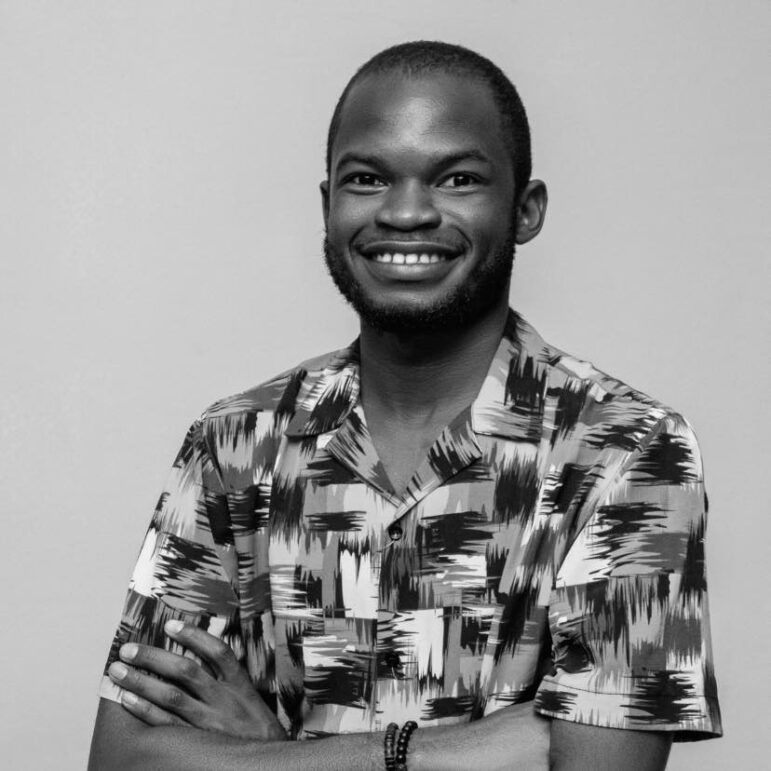
Johnstone Kpilaakaa, sub editor and head of ethics and standards at HumAngle Media. Image: Courtesy of Kpilaakaa
That balance depends on open communication. When he was investigating the suspected armed attack in Nigeria’s Plateau State, Kpilaakaa feared the risk of crossing the line between journalism and commentary, objectivity, and identity, as his ethnic group was caught in the center of the violence.
“I knew I couldn’t tell this story without my feelings creeping in, so I told my editor upfront that my perspective might affect the framing,” he recalls. But with the subject expertise editors in his newsroom, where conflict reports pass through multiple editors —an extremism editor, a gender editor, a line editor, and a specialist editor — the reviews ensure deeper scrutiny.
“Bias is inevitable,” Kpilaakaa points out. “But with trust, expertise, and open dialogue, editors and reporters can transform vulnerability into stronger, more responsible journalism.”
Include as Many Voices as Possible
There is no accuracy and balance in reports without community voices — they are essential.
“You can’t tell the story of people without talking to them,” says Kpilaakaa. Instead of scheduling interviews, he often visits homes or local leaders of affected communities directly, allowing residents to share raw emotions and experiences. Kpilaakaa recalls traveling to the Bassa Local Government area, in the north of Nigeria’s Plateau State, after a massacre earlier this year, where unscripted conversations revealed deeper truths. “The community knows the challenges — they are the ones living through it.”
Listening to both sides in a conflict setting and unscripted conversations brings more balance and depth to reporting, Kpilaakaa says.
Follow Principles of Conflict-Sensitive Reporting
Salam Omer, a media development expert and trainer for conflict-sensitive reporting, is the editor-in-chief of KirkukNow, an independent outlet covering Iraq’s disputed territories — areas in the north of the country, including Iraqi Kurdistan, inhabited by non-Arab groups such as Kurds, Assyrians, Yazidis, Turkmens, and Shabaks that were “Arabized” under Ba’ath Party rule and that are claimed by both the federal government in Baghdad and the Kurdish regional government. There are disputes over territory and control of resources, such as oil and gas. Kirkuk is the capital of the Kirkuk Governorate and the center of the oil industry in the region.
“My motivation has always been to ensure that journalism serves as a bridge between divided communities, amplifies marginalized voices, and contributes to peace and democratic development in the MENA region,” Omer says.
When KirkukNow dug into a land dispute and escalating tensions in villages around Kirkuk between farmers from the Arab and Kurdish communities, the newsroom reflected on the core principles of fairness, objectivity, and inclusion, demonstrated by presenting both Arab and Kurdish perspectives without inflammatory language, to avoid escalating disputes between the two parties.
In modern journalism, conflict-sensitive reporting is as difficult as it is important, explains Omer. “Journalists should be aware of up to 10 principles, such as verification, objectivity, originality, inclusiveness, transparency, fairness, self-constraint, humanity, accountability, and empowerment.”
Have Clear Editorial Policies on Language
In communities gripped by shifting conflict dynamics, newsrooms face the urgent task of safeguarding their work and their audiences. Preparation is key, Omer says. “To mitigate the risk of incitement, it is essential to have clear strategies, such as business plans, gender policies, and safeguarding policies.”
Trust comes from inclusivity, he notes. When diverse teams shape coverage, when editorial lines are transparent, and when stories are published in multiple languages, communities are more likely to believe their reporting is accurate and they are working for them rather than against them. “This consistency can help maintain operational space even in highly volatile situations,” Omer adds.
Omer remembers what that looks like in practice. At KirkukNow, while covering a conflict in Iraq, his newsroom faced an unusual demand. One of the parties involved wanted them to describe their dead as “martyred,” a word heavy with meaning, meant to sanctify loss and tilt the narrative.
Their choice at Kirkuknow was clear. “We refused,” he said. “As journalists, we are not in a position to decide who is right or wrong, nor are we a religious institution. Our role is simply to report facts.”
Balance Speed and Accuracy — With Emphasis on the Latter
In an era of breaking news and viral misinformation, restraint has become as vital as accuracy. “Verify all information before publishing, keep stories updated, and issue corrections if mistakes are made,” Omer says. “Over time, this careful approach builds trust and credibility, even if it means being slower.”
That caution is more than theory — it is a practice. At KirkukNow, accuracy routinely takes precedence over speed. In its report on Yazidi survivors, six years after ISIS attacks and kidnappings, the newsroom documented the recovery efforts with precision and avoided including unverified claims.
By working closely with community sources and updating stories as new details emerged, they developed a “Follow-ups” section, which keeps stories updated when reporting is ongoing.
Such diligence is especially critical in the Middle East and North Africa, where religious beliefs can sometimes intersect with misinformation. He stressed that preparation, thorough research, and collaboration with other journalists are essential to avoid distortions.
“Journalists must remain committed to professional standards, no matter the pressures of the environment,” Omer cautions.
Be Intentional with Language — Without Creating ‘Victim’ Narratives
Too often, journalists portray victims of conflict in a way that reduces them to their suffering. Redwan Ahmed, a freelance journalist based in Bangladesh who has spent years reporting on the Rohingya crisis, explained that this framing can overshadow their resilience. For Ahmed, humanization begins with listening — without an agenda in the field or the editing room.
“It’s about which quotes we select, whose voice leads the story, and what context we provide,” he adds.
The challenge, he says, is to resist the temptation to define people solely by their wounds. Instead, try to include their aspirations and their fight to live with dignity. “It means being intentional with language: choosing dignity over dramatics, and agency over helplessness.” Ultimately, Ahmed explains, humanizing doesn’t mean sanitizing — it means offering a fuller picture of someone’s life and experiences.
Verify by ‘Triangulation’
Verification starts not with just a quote or a document, but with active listening and understanding context, explained Ahmed. “As a journalist, it’s crucial to recognize that testimony may come wrapped in fear, miscommunication, or limited understanding of the broader geopolitical stakes.”
Triangulation reporting is key, he emphasizes. That means asking follow-up questions in different ways, cross-checking claims with stakeholders, consulting researchers, and reviewing social media or audio-visual evidence.
“I’ve learned to take nothing at face value, but also not to dismiss a claim because it lacks conventional proof,” says Ahmed. “In a community where truth is routinely suppressed, sometimes the whispers and absences are what you must investigate hardest.”
In reporting, Ahmed avoids publishing identifying details without consent, and often uses encrypted messaging tools and off-record conversations to build trust. These protect sources whose information could, in some cases, cost someone their freedom or life. “In divided societies affected by ethnic or religious violence, protecting sources is not only a technical task — it is an ethical obligation,” he says.
This is alongside the risk of retaliation for many Rohingya, not only from state actors, but also from powerful groups within the large camps where many live in exile. “I’ve delayed stories to wait for people to relocate safely, or shifted the focus entirely to avoid exposing someone inadvertently,” said Ahmed.
Start Safety Plans in the Newsroom
For Priyadarshini Sen, safety and precautionary steps don’t begin with the battlefield, but in the newsroom — particularly for women journalists reporting from conflict zones.
Sen — an independent journalist in India and a member of the International Association of Religion Journalists, who reports mostly on the solution angle of religious and ethnic conflict — knows first-hand how female reporters can carry unique perspectives into war and crisis stories, yet also face gender-specific risks that heighten the dangers of these assignments.
“The safety of reporters starts from the newsroom, particularly for women conflict reporters,” she said. In her view, protection is not only about helmets or hostile environment training; it’s also about building networks that act as lifelines. Inside the newsroom, that might mean editors who monitor a reporter’s movements. Beyond that, they should have a set of emergency contacts is ready to step in at short notice.
Sen believes that, for women under the relentless pressure of daily deadlines, these safeguards can make the difference between vulnerability and security.
Collaborate
In volatile environments, the reporter’s greatest tools are not just notebooks or recorders, but relationships. Sen argues that sources are more than providers of information — they are partners in a delicate exchange of trust.
Treating those connections as purely transactional, she explains, erodes credibility and can heighten risks, especially in communities fractured by conflict. While reporting on a priest’s journey to finding peace across borders after years of religious and ethnic conflict, her on-the-ground fixer helped bridge cultural divides, allowing communities to open up and share their stories.
Respecting culture and being mindful of social status are practices that help responsible reporting. Working among marginalized communities is rarely straightforward.
When she met with members of a caste group to report on their marginalization, they hesitated, wary of her dress that symbolized an ethnic group with whom they had fraught relations. It was a reminder of how cultural signifiers can shape trust. With careful mediation from her fixer, who explained her intentions and background, the mistrust lifted. The residents eventually spoke openly, highlighting the importance of cultural sensitivity in conflict reporting.
But collaboration doesn’t stop there. While reporters should be aware of the environment and community they are reporting on, Sen encourages journalists to work in partnership with local reporters and fixers, particularly when the former do not share the religion or ethnicity of the community they’re covering. Such partnerships can lower barriers, reduce suspicion, and create safer spaces for conversations. “It allows people to respond more openly and engage intensively in conversations with reporters,” she said.
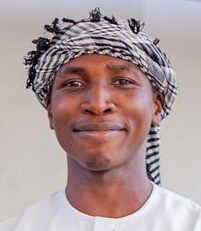 Abdulbasid Dantsoho is a Nigerian freelance journalist covering stories at the intersection of human rights, conflict, climate change, health, and accountability. He has been published by HumAngle Media and Kanempress. He was a media and accountability fellow with HumAngle Media 2023, a journalism fellow with Africa Disease Prevention, Research and Development (ADRaP) in 2024, and a delegate at the Wole Soyinka Centre for Investigative Journalism conference in 2023.
Abdulbasid Dantsoho is a Nigerian freelance journalist covering stories at the intersection of human rights, conflict, climate change, health, and accountability. He has been published by HumAngle Media and Kanempress. He was a media and accountability fellow with HumAngle Media 2023, a journalism fellow with Africa Disease Prevention, Research and Development (ADRaP) in 2024, and a delegate at the Wole Soyinka Centre for Investigative Journalism conference in 2023.

